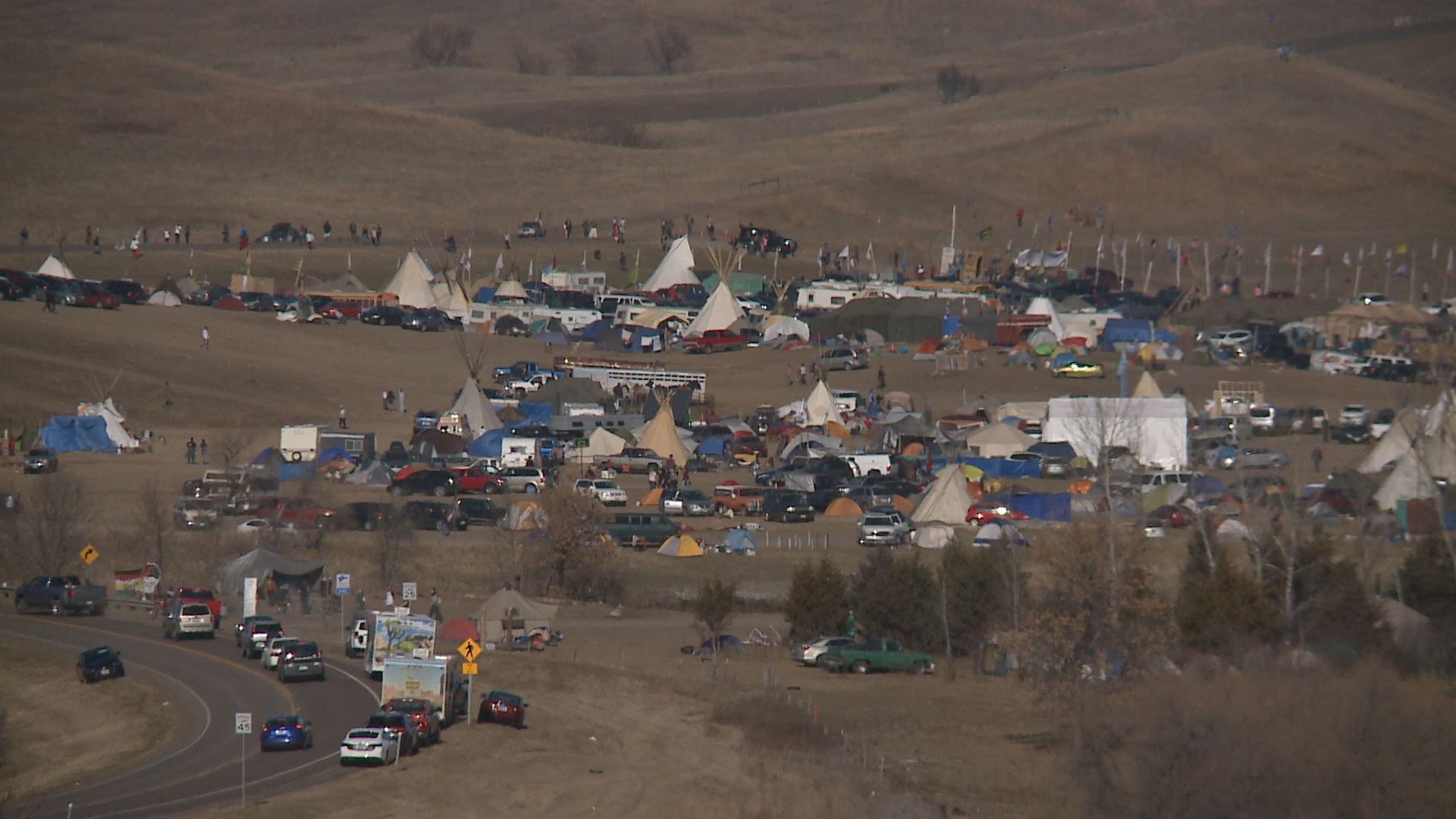CANNON BALL, ND – The U.S. Army of Engineers said it needs more information before granting the approval of the Dakota Access Pipeline to stay on its planned route.
Monday, the federal government informed the pipeline company, Energy Transfer Partners and the Standing Rock Sioux Tribe, which is against the construction, that a review was complete and the route needed more study before the pipeline construction can cross underneath the Missouri River.
The latest developments should be welcomed news for protesters who have been trying to stop construction on the nearly $4 billion oil pipeline that is scheduled to be finished this year.

It would transport nearly 500,000 gallons of crude oil a day from the Bakken formation in western North Dakota through South Dakota, Iowa and Illinois. It would run more than a thousand miles.
But the nearby Standing Rock Sioux Reservation and its supporters have been trying to stop it. They fear the pipeline could spell environmental disaster crossing under the Missouri River and other waterways that connect to it.
“It’s very stressful,” Michelle Tyon told KARE 11. "We all know when the pipeline breaks, not if but when, it’s going to destroy the water.”
Tyon was born on the Standing Rock Sioux Reservation which is not far from where the construction is happening. She has lived at the nearby camp for three months in hopes of stopping construction. She’s been joined by hundreds of people from all over the world, including Minnesotans, who have camped on the federal land.
"This is all of our land, 1851 Treaty land,” she said.
Despite the months of protests, construction has continued. Energy Transfer Partners would not comment, referring KARE 11 to its website. And the Standing Rock Sioux Tribe did not return repeated phone calls for comment.
"We feel this pipeline is in the best interest of the public,” said Julie Fedorchak, the North Dakota Public Service Commission Chairperson.
She said the state spent more than a year studying the pipeline and holding hearings. She said despite reaching out to the Standing Rock Sioux Tribe, leaders never contacted her office during that process.
“Quite honestly, I was stunned. Because they’re 45 minutes from one of the locations where we had a hearing,” she said adding the tribe was in discussions with the federal government.
The pipeline will follow an existing natural gas pipeline, she said.
"I think it’s far safer to put it 92 feet below the river which is what this pipeline will be,” she said.
"While the tribes have some serious concerns about this route, it does not cross tribal land.”
A federal judge denied an attempt by the Standing Rock Sioux Reservation to stop construction in September saying it "has not demonstrated that an injunction is warranted here.”
A video posted by Jay Olstad (@jayolstadtv) on
The tribal leaders have said they were not adequately informed by the U.S. Army Corps of Engineers about the project. And today, the Army seemed to at least agree more discussion was necessary before signing off on the pipeline.
In a joint statement, the Army and the U.S. Department of Interior said analysis would be completed as quickly as possible.
“The Army has determined that additional discussion and analysis are warranted in light of the history of the Great Sioux Nation's dispossessions of lands, the importance of Lake Oahe to the Tribe, our government-to-government relationship, and the statute governing easements through government property,” it read.

